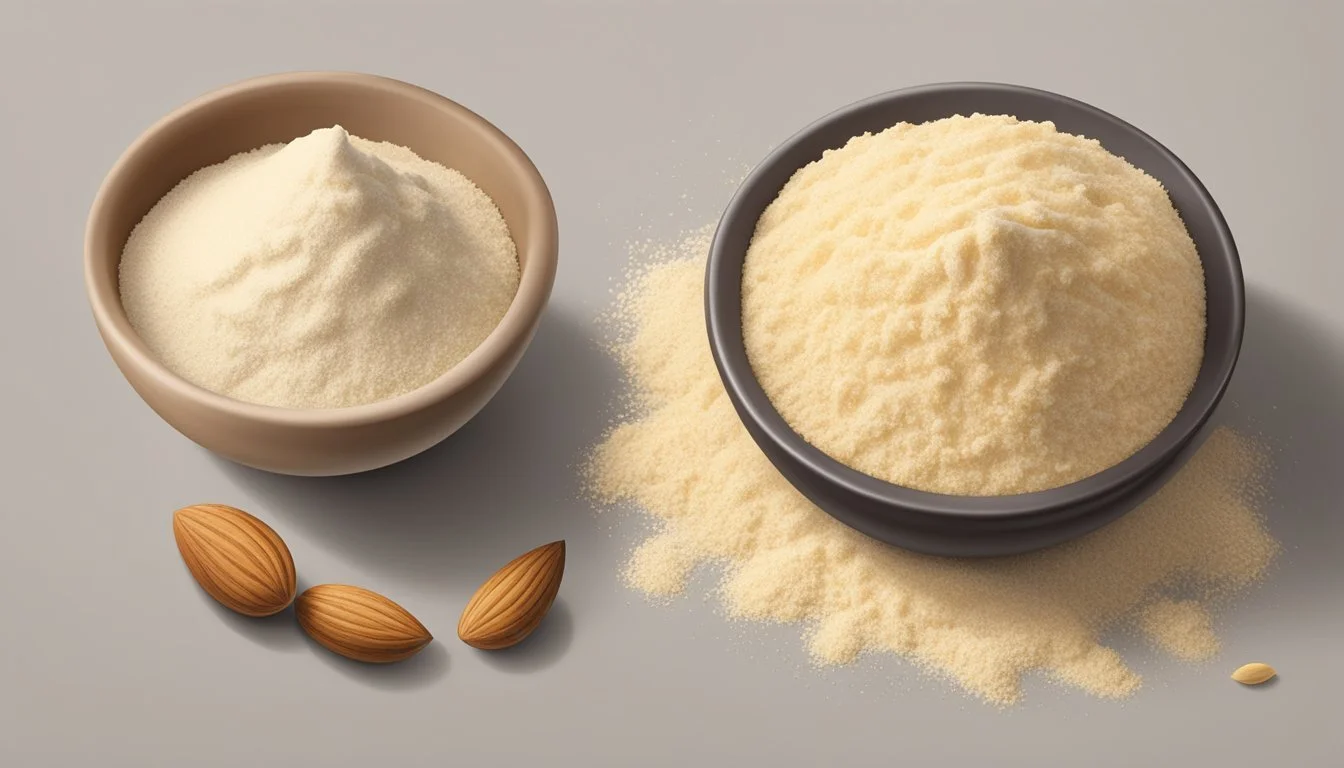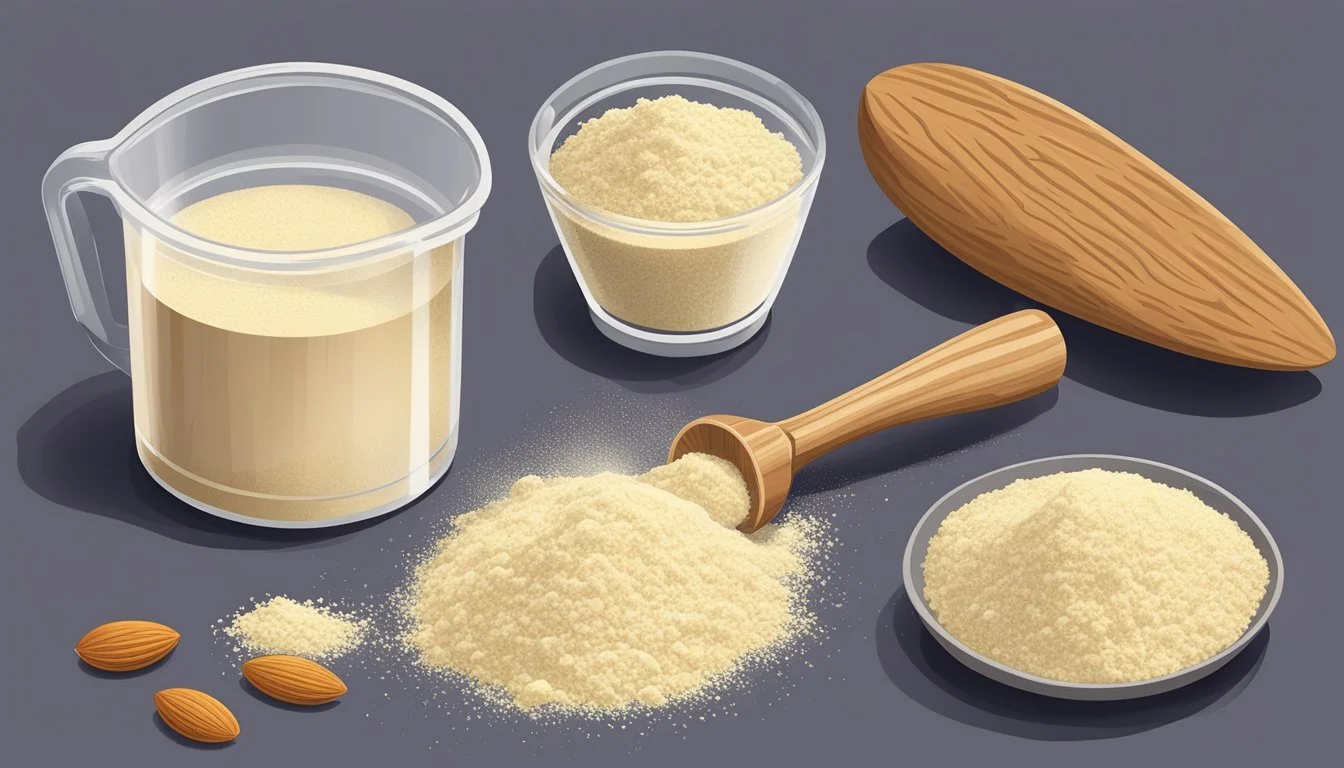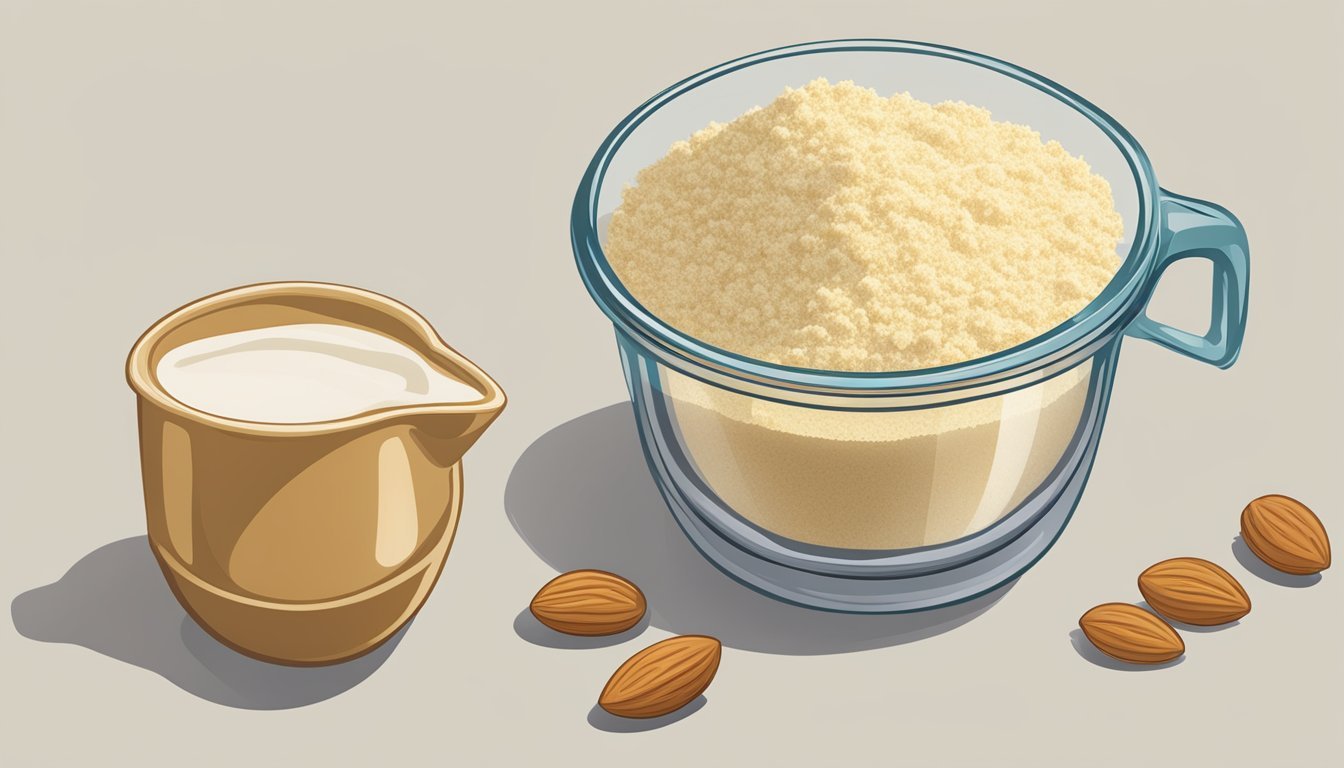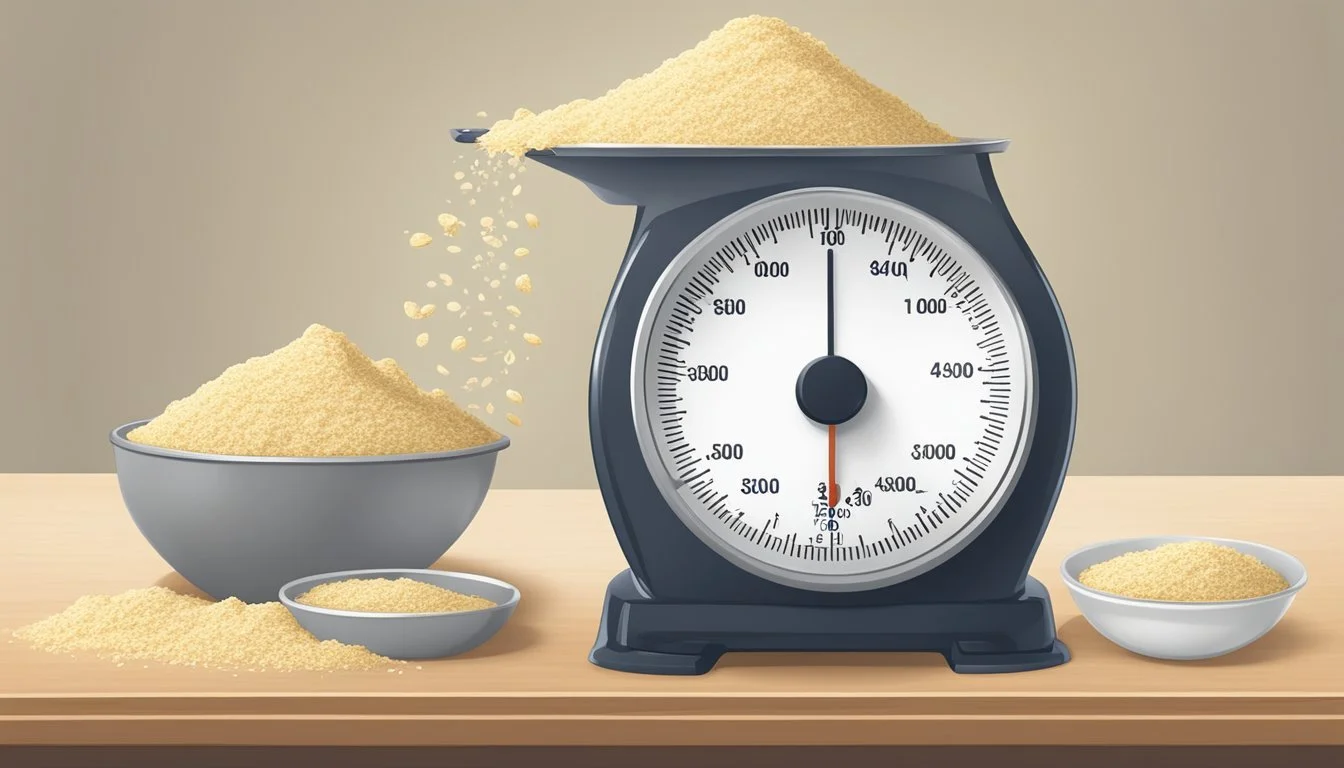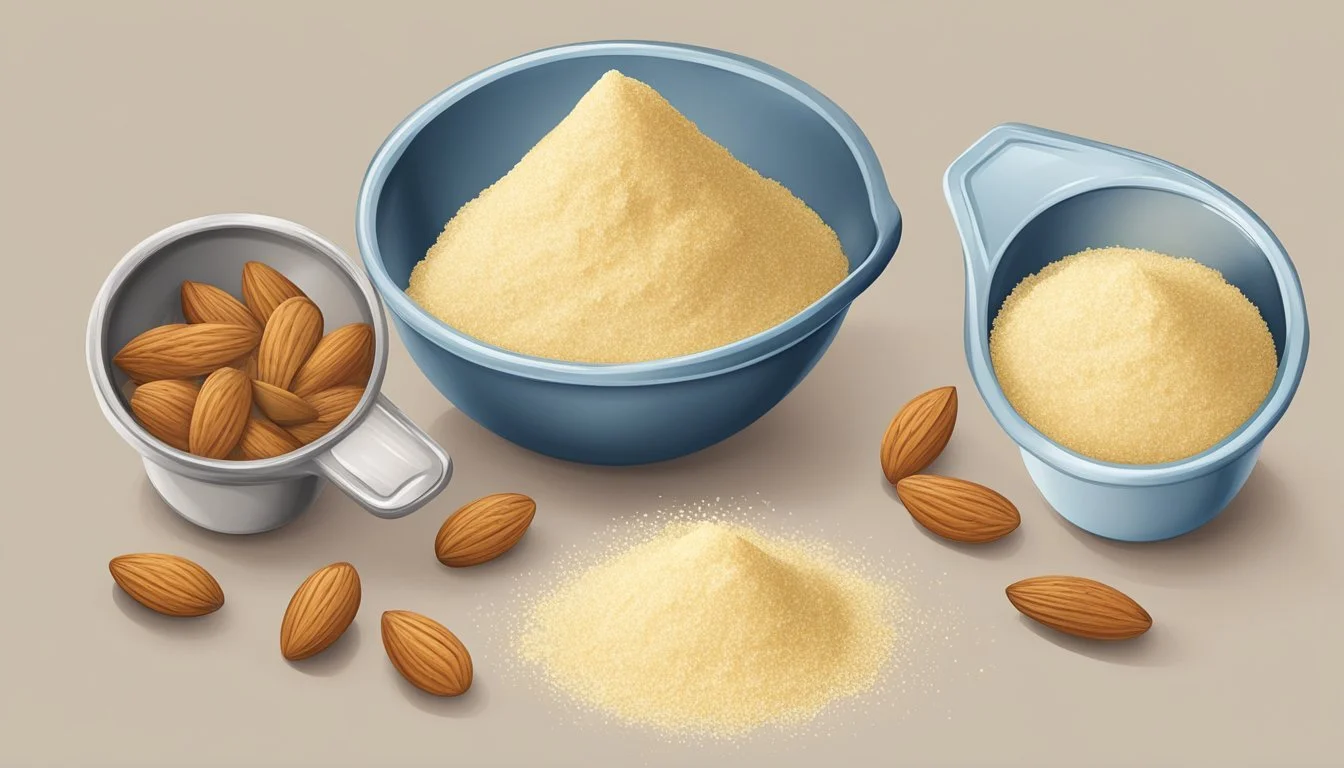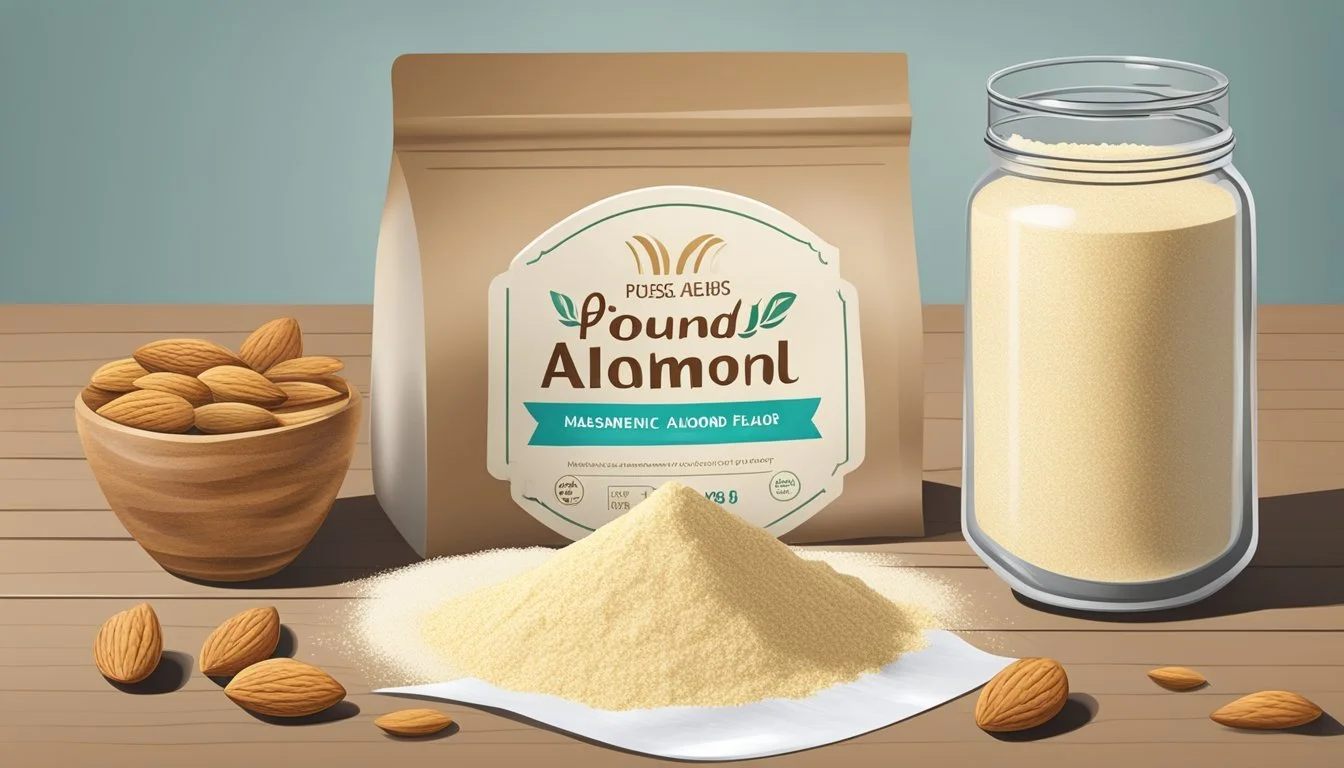How Many Tablespoons in a Pound of Almond Flour
Measurement Conversion Guide
When working with almond flour in the kitchen, understanding the conversion between weight and volume measures is crucial for precise culinary results. A pound of almond flour is equivalent to approximately 54 tablespoons. This conversion is essential for chefs, bakers, and even those teaching culinary arts, as consistent outcomes depend on accurately measuring ingredients.
Almond flour, known for its nutritional value and use in gluten-free and low-carbohydrate diets, has different properties than wheat flour, thus affecting the conversion ratio. Its density and higher fat content influence the weight-to-volume relationship, so the standard conversion might be slightly adjusted depending on the recipe requirements.
The ability to convert pounds of almond flour into tablespoons is particularly useful because it allows for the adjustment of recipes to different sizes or scales without compromising texture or flavor. Therefore, whether one is experimenting with new recipes or adapting amounts for dietary preferences, this knowledge ensures that the desired consistency in baked goods and other almond flour-based dishes is maintained.
Exploring Almond Flour
Almond flour, derived from ground almonds, is a popular gluten-free alternative to traditional wheat flour. It is widely used in baking and cooking, catering to those with celiac disease or gluten sensitivities, as well as individuals aiming for a low-carbohydrate diet. The flour itself consists of blanched almonds that have been finely ground to a meal-like texture.
Nutritional Profile:
Rich in protein: Enhances satiety
Low in carbohydrates: Suitable for keto diets
High in vitamins E and magnesium: Supports heart health
Culinary Applications: Almond flour is versatile and can be used in a variety of recipes:
Baking: Cakes, cookies, bread, and pastries
Cooking: Breading for meats and vegetables, thickeners for sauces and soups
Handling Almond Flour: Almond flour carries more moisture compared to wheat flour, which might necessitate adjustments in recipes. For example, more almond flour may be required to avoid a watery batter or dough.
Conversion Estimates: A precise conversion from weight to volume is crucial in recipes to ensure consistency.
Weight Volume 1 lb Approx. 32 tbsp*
*Based on average conversion estimates; actual results can vary depending on the brand and grind fineness.
Considerations in Use: Almond flour has a shorter shelf life than wheat flour. It's recommended to store it in a cool, dry place or refrigerated to prolong its freshness. Individuals with nut allergies should avoid almond flour due to its almond content.
Overall, almond flour's health benefits and suitability for gluten-free diets make it a valuable ingredient in modern cooking and baking.
Measurement Fundamentals
To achieve the best results in cooking and baking, one must understand the relationship between different types of measurements. This section breaks down the basics of units of measure, the difference between weight and volume, and the importance of measuring with precision.
Units of Measure
Units of mass such as pounds (lb) and grams (g) quantify how much matter an ingredient contains. Units of volume like tablespoons (tbsp), cups (c), and milliliters (ml) indicate the space an ingredient occupies. For dry ingredients like almond flour, chefs and bakers often convert between these units based on standardized equivalents.
Understanding Weight vs. Volume
Weight and volume are two distinct types of measurement essential in cooking:
Weight is an absolute measure that remains consistent regardless of the ingredient's density or compaction. One pound of almond flour by weight is always one pound.
Volume measurement can vary significantly based on how an ingredient is packed or its inherent settling properties. Therefore, one cup of loosely filled almond flour may contain less of the ingredient compared to one that is densely packed.
Importance of Accuracy
Accurate measurements are crucial for recipe success, particularly in baking where ratios greatly influence the final product's texture and structure. Using precise units such as tablespoons when converting from a unit of mass like a pound ensures consistency and replicability. For instance, knowing that one pound of almond flour equals 75.6 tablespoons provides bakers with the precision needed for their creations.
Conversion Essentials
When baking or cooking with almond flour, understanding how to accurately convert measurements between tablespoons and pounds is crucial. For chefs and home cooks alike, precision is the key to achieving the desired consistency and taste in recipes using almond flour.
Tablespoons to Pounds
To convert tablespoons of almond flour into pounds, one has to remember that a pound contains approximately 75.6 tablespoons. This provides a starting point, but adjustments may be required due to the variable density of almond flour compared to other flours.
Formula: 1 pound of almond flour ≈ 75.6 tablespoons.
Almond Flour Conversion Factors
Almond flour displays different properties compared to all-purpose flour. It's typically denser, which can affect the conversion factor between volume and weight measurements.
Density Considerations: Almond flour's fine texture and oil content may lead to variations in the required quantity for recipes.
Using a Scale for Precision
For the most accurate almond flour measurements in a culinary setting, one should use a kitchen scale. Since volume measurements can be inconsistent due to the flour's compactability, a scale ensures that the amount used is precise.
Scale Measurement: Weighing almond flour on a scale will give a precise measurement that is not subject to the variances of volume measurements.
Baking with Almond Flour
Almond flour is a gluten-free baking staple renowned for its versatility in recipes for cookies, cakes, breads, and muffins. Crafting baked goods with almond flour calls for specific measurement conversions and comparisons to other flours for optimal results.
Recipe Adjustments
When substituting almond flour in recipes traditionally designed for wheat flour, bakers should consider both the texture and moisture content. Almond flour carries more moisture and may require an altered ingredient ratio to prevent overly wet batter:
Increased Flour: Recipes may need additional almond flour to achieve the desired consistency.
Reduced Fats: Given its high-fat content, reducing other fat sources like oils or butter might be necessary.
Egg Binding: To enhance structure, extra eggs or egg whites can aid in binding, as almond flour lacks gluten.
For example, where a recipe calls for 1 cup of wheat flour, one might start by using 1 & 1/2 cups of almond flour and adjust from there based on the dough or batter's consistency.
Comparing Flours
The attributes of almond flour differ significantly from other flours like coconut or rice flour. Here is a brief comparison:
Coconut Flour: This flour is extremely absorbent, necessitating more liquid than almond flour. It cannot be substituted at a 1:1 ratio.
Rice Flour: Finer in texture but without the same fat content, rice flour may create a different moisture balance and may not provide the same richness as almond flour.
Flour Type Protein Fat Fiber Almond Flour Medium High Medium Coconut Flour High Low High Rice Flour Low Low Low
Bakers typically use almond flour for its ability to create tender and moist baked goods, oftentimes enhancing the overall nutty flavor, especially compared to the neutral taste of rice flour or the distinctive taste of coconut flour. Each flour brings its distinctive properties to the recipe, be it in texture, flavor, or nutritional content, and requires individual consideration for successful baking outcomes.
Culinary Applications
In cooking, precision is key, and knowing how many tablespoons are in a pound of almond flour aids chefs and home cooks alike. Almond flour, when measured properly, provides a gluten-free alternative to traditional wheat flour, offering a nutty flavor and a boost of nutrients. It's commonly used ground to a fine texture and serves various culinary uses.
For instance, when making granola, a chef might incorporate almond flour to add richness and bind the ingredients. Typically, granola recipes do not require high precision, but consistency in texture is desired. Chocolate chips often complement the nutty notes of almond flour and can be folded into the mixture for additional sweetness and texture.
Moreover, almond flour can replace breadcrumbs in recipes, offering a low-carb alternative. Whether it's for coating chopped poultry or vegetables, almond flour creates a crispy exterior when pan-fried or baked. The amount of almond flour needed is critical to avoid sogginess or an overpowering almond flavor.
For bakers, achieving the perfect consistency in pastries such as slices of bread or cookies is essential. They might include almond flour to produce a tender crumb while utilizing vanilla extract to enhance the overall flavor profile. Recipes may call for almond flour to be sliced or slivered when used as a topping for additional texture and aesthetic appeal.
Almond flour's versatility extends to its ability to be a primary ingredient in delicate confections where it's ground and sifted to ensure a fine, consistent texture. Quantity conversion is particularly crucial here, as excessive almond flour can lead to dryness or density in finished products.
Ingredient Role In Recipe Measurement Note Almond Flour Gluten-free flour substitute, texture Use tablespoons for precise measurement Chocolate Chips Sweetness, texture Added to complement almond flour Vanilla Extract Flavor enhancement Balanced with other ingredients
In summary, almond flour is an invaluable ingredient in the culinary world, adaptable to a wide array of dishes while requiring careful measurement for optimal results.
Nutritional Considerations
When measuring almond flour by weight, one should consider its nutritional profile. Almond flour, whether it's made from whole almonds including the skin (commonly known as almond meal) or from blanched almonds with the skin removed, is a nutrient-dense food that offers an alternative to traditional grains in baking.
Nutrient Composition of Almond Flour:
Protein: Almond flour provides a good source of plant-based protein, making it an attractive ingredient for those looking to increase their protein intake from non-animal sources.
Fats: It is rich in healthy monounsaturated and polyunsaturated fats, which are beneficial for heart health.
Fiber: As a flour, it retains a considerable amount of fiber, aiding in digestion and contributing to a feeling of fullness.
Nutritional Comparison per Tablespoon:
Nutrient Amount Calories ~55 Total Carbohydrates ~1.5g Dietary Fiber ~0.9g Sugars ~0.35g Fat ~4.8g Protein ~2.2g
For those crafting delicate desserts like macarons, almond flour is particularly valued for its fine texture and the rich, nutty flavor it imparts. Its nutritional value adds a beneficial component to these treats, which are often seen as indulgences.
Comparatively, almond flour is lower in carbohydrates than grain-based flours, making it a favorite amongst those following low-carbohydrate or gluten-free diets. The process of blanching the almonds for almond flour involves removing the skin, yet this does not significantly reduce its nutritional value. By incorporating almond flour into recipes, one can benefit from the nutritional merits it provides without compromising the desired culinary texture and consistency.
Practical Tips and Tricks
When measuring almond flour, accuracy is paramount to ensure proper consistency and taste of the final product. Avoiding common mistakes and understanding alternative measurements are key to success.
Avoiding Common Mistakes
Almond flour, unlike all-purpose flour, has a different density and fat content. One pound of almond flour contains approximately 64 tablespoons. A common error is packing the flour into the measuring cup, which can lead to a heavier pound and an inaccurate measurement. To precisely measure almond flour:
Spoon almond flour into the measuring cup and level it off with a knife.
Avoid tapping or shaking the cup as this can settle the flour and cause overpacking.
Alternative Measurements
For those who need to convert almond flour measurements to align with their recipe requirements, here's a handy table for reference:
Measurement Almond Flour 1 Cup 4 ounces / 16 tablespoons (approx.) 1/2 Cup 2 ounces / 8 tablespoons (approx.) 1/4 Cup 1 ounce / 4 tablespoons (approx.) 1 Tablespoon 0.25 ounces (approx.)
Remember, these are estimates and can vary based on the almond flour's consistency and whether it's packed or sifted. When substituting for all-purpose flour, consider that almond flour may produce a moister outcome due to its higher fat content.
It's also essential to consider the adjustments for other ingredients like granulated sugar, butter, and liquid (water or milk) when almond flour is used to maintain the desired yield. As for dry ingredients, the structure provided by all-purpose flour will differ from that of almond flour, which might alter the texture of baked goods. Internal recipe balance should be carefully maintained.
Conversions for Other Ingredients
When cooking or baking, it is often necessary to convert measurements to suit a recipe or dietary requirements. For ingredients like cashews, sunflower seeds, and chicken, understanding these conversions can assist in creating accurate and delicious dishes.
Cashews are often used in recipes requiring a rich, creamy texture, especially in plant-based cooking. The weight-to-volume conversion for cashews is as follows:
Whole cashews: 1 cup = 140 grams
Cashew pieces: 1 cup = 125 grams
Raw sunflower seeds add a nutty flavor and crunch to dishes. Their conversion measurements are indicated below:
Shelled sunflower seeds:
1 cup = 140 grams
1 tablespoon = approximately 8.75 grams
When preparing chicken, the cook often needs to understand the conversion from pounds to cups, especially when the recipe calls for cooked and shredded chicken. Chicken conversion depends on whether it is whole, cubed, or shredded:
Whole chicken: 1 pound = roughly 2 cups cooked and cubed
Shredded chicken: 1 pound = approximately 4 cups
For accuracy, using a kitchen scale to weigh ingredients directly is recommended. This is because volume measurements can vary based on factors such as ingredient density and the fineness of the grind or chop.
It is essential to note that these conversions can vary slightly depending on the size and cut of the ingredients. For the most reliable results in any recipe, one should always calibrate their measurements when working with new or unfamiliar ingredient forms.
Appendix: Measurement Table
When dealing with the conversion of food ingredients, particularly almond flour, precision is vital. The weight of almond flour can vary due to factors such as moisture content and how tightly it's packed. Usually, professional bakers and chefs recommend weighing ingredients for accuracy.
Almond Flour Conversion
Weight to Volume:
1 pound almond flour = Approx. 3.39 US cups
Given that 1 US cup of almond flour weighs 96 grams, there are 453.592 grams in a pound. To convert pounds to cups, they divide the total weight in grams by the weight of 1 cup in grams. For tablespoons, it's crucial to note that 1 US tablespoon is approximately 14.3 grams of almond flour.
Pounds to Tablespoons:
1 pound almond flour = (453.592 grams / 14.3 grams) tablespoons = 31.73 tablespoons
So, 1 pound of almond flour equals 31.73 US tablespoons.
Common Baking Ingredient Conversions
All-Purpose Flour:
1 US tablespoon = 8 grams
1 US cup = 125 grams
Granulated Sugar:
1 US tablespoon = 12.5 grams
1 US cup = 200 grams
Additional Notes: Measuring almond flour in volume (such as cups or tablespoons) can be affected by how one measures; whether they scoop or spoon, it can influence the amount of flour and the outcome of a recipe. Due to this, using weights for dry ingredients is often recommended.
Eggs and other binders in recipes contribute to the consistency and need precise measuring. Large eggs typically weigh around 50 grams.
For other grain flours, weighing is also the preferable method, since their density can differ from that of almond flour.
Tablespoons to Kilograms:
1 US tablespoon almond flour = 14.3 grams = 0.0143 kilograms
Conclusion
Chefs and bakers frequently require precise measurements to ensure the success of their culinary creations. Converting from weight to volume is especially pertinent when dealing with almond flour, an ingredient known for its unique properties and health benefits. A pound of almond flour translates to approximately 75.6 tablespoons. This conversion is critical for precision in recipes and dietary calculations.
It's essential to understand the difference between the units of measurement. A pound (lb) is a unit of weight, and a tablespoon (tbsp) is a unit of volume. Although these approximations provide a solid baseline, variances in almond flour density and texture can slightly alter the outcome. Therefore, when converting pounds to tablespoons, it's recommended to consider this a general guideline rather than an exact figure.
The conversion of almond flour from pounds to tablespoons assumes a standard density, which can vary slightly depending on the brand and grind of the flour.
Measurement Almond Flour Equivalent 1 pound (lb) ~75.6 tablespoons (tbsp)
For precision in recipes, bakers should measure the almond flour by weight. Due to its health benefits and nutrient profile, almond flour is popular in certain diets and for those looking to substitute traditional wheat flour.
Remember, this information serves as a guide and should be adjusted based on personal cooking and baking needs. Always consult specific recipe requirements and personal dietary needs before making conversions.


